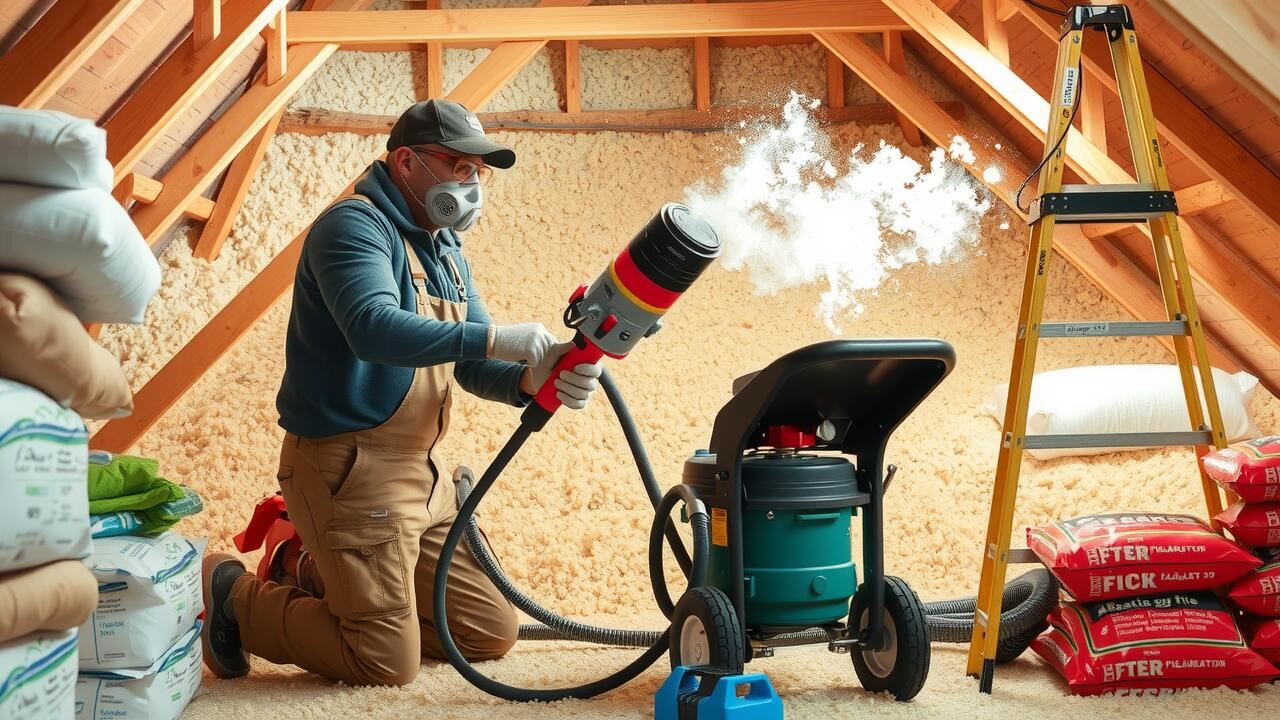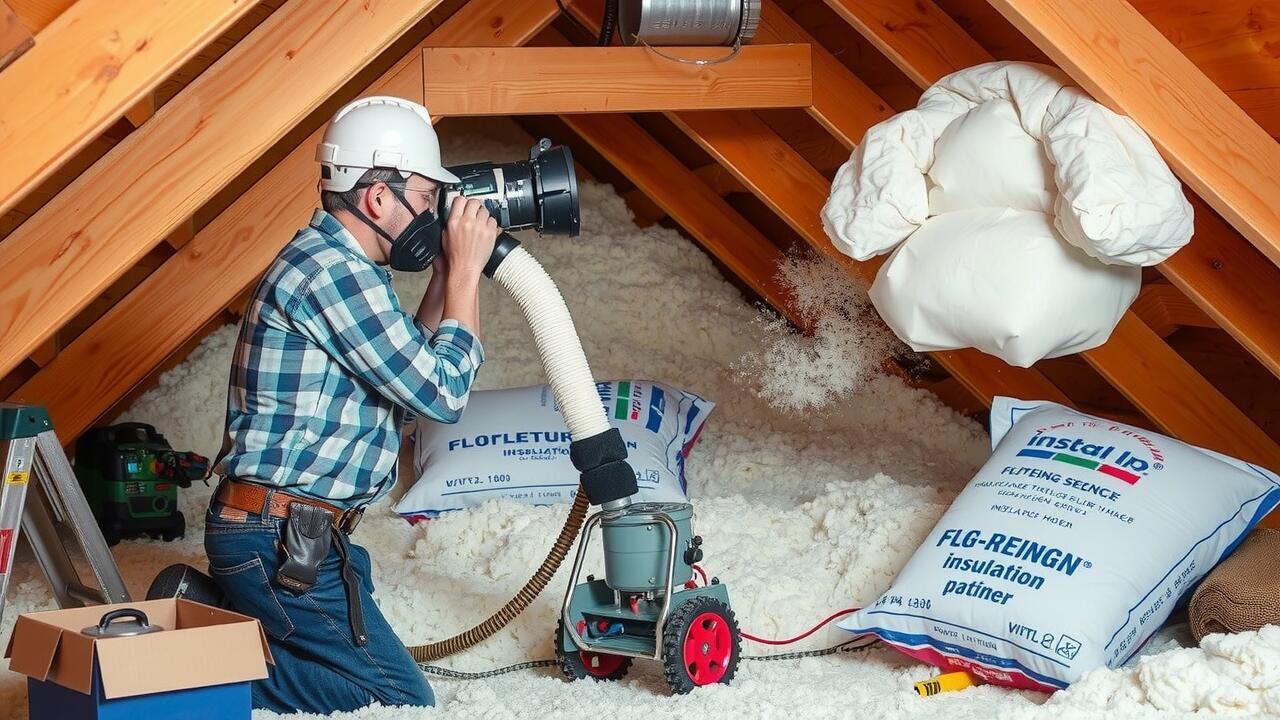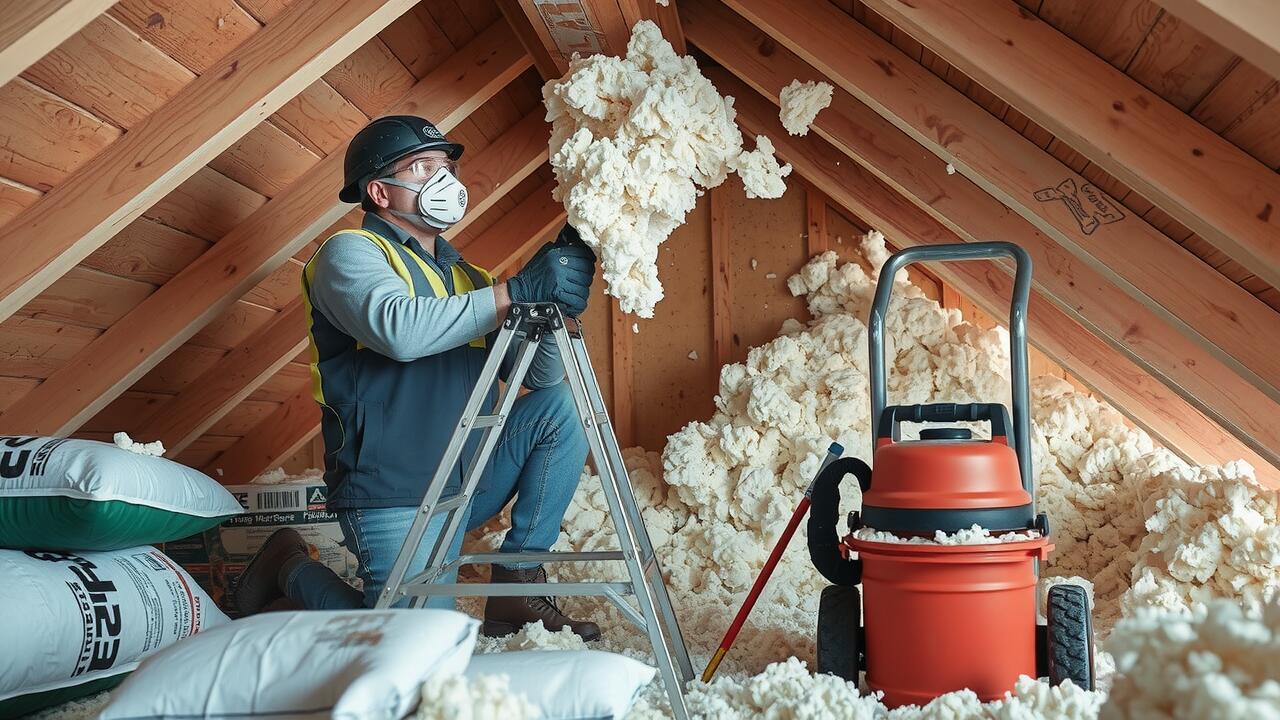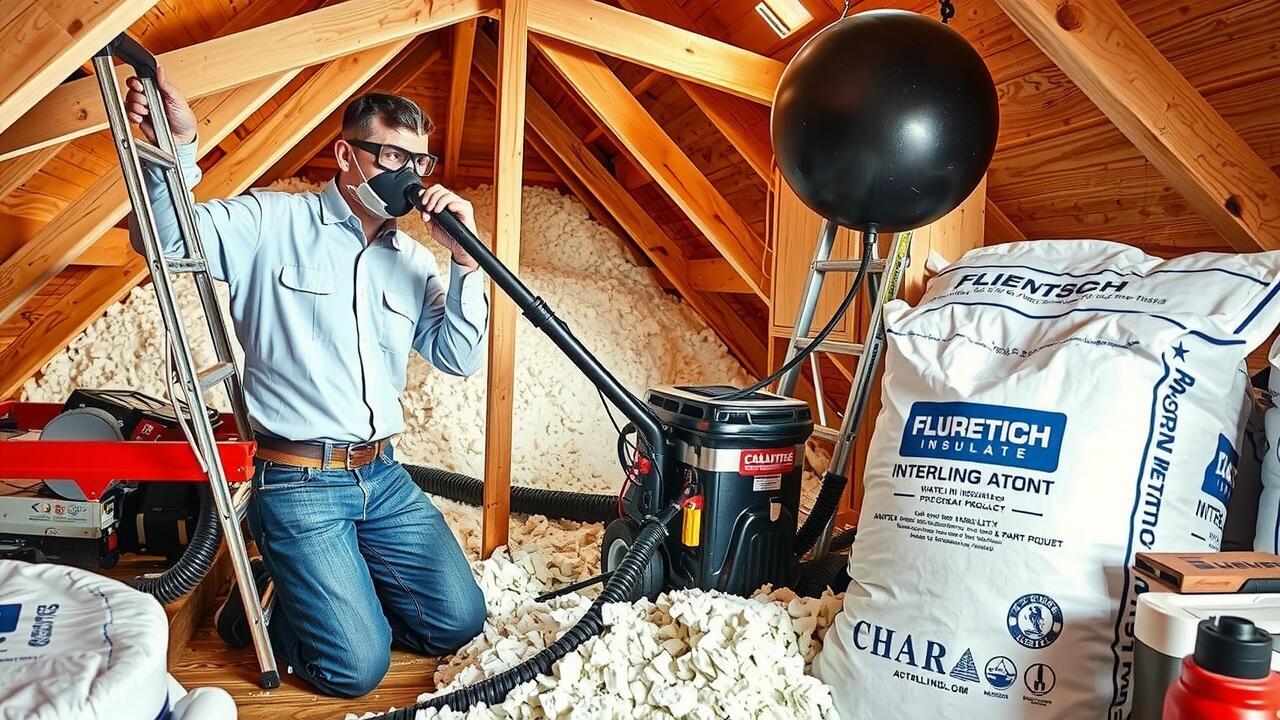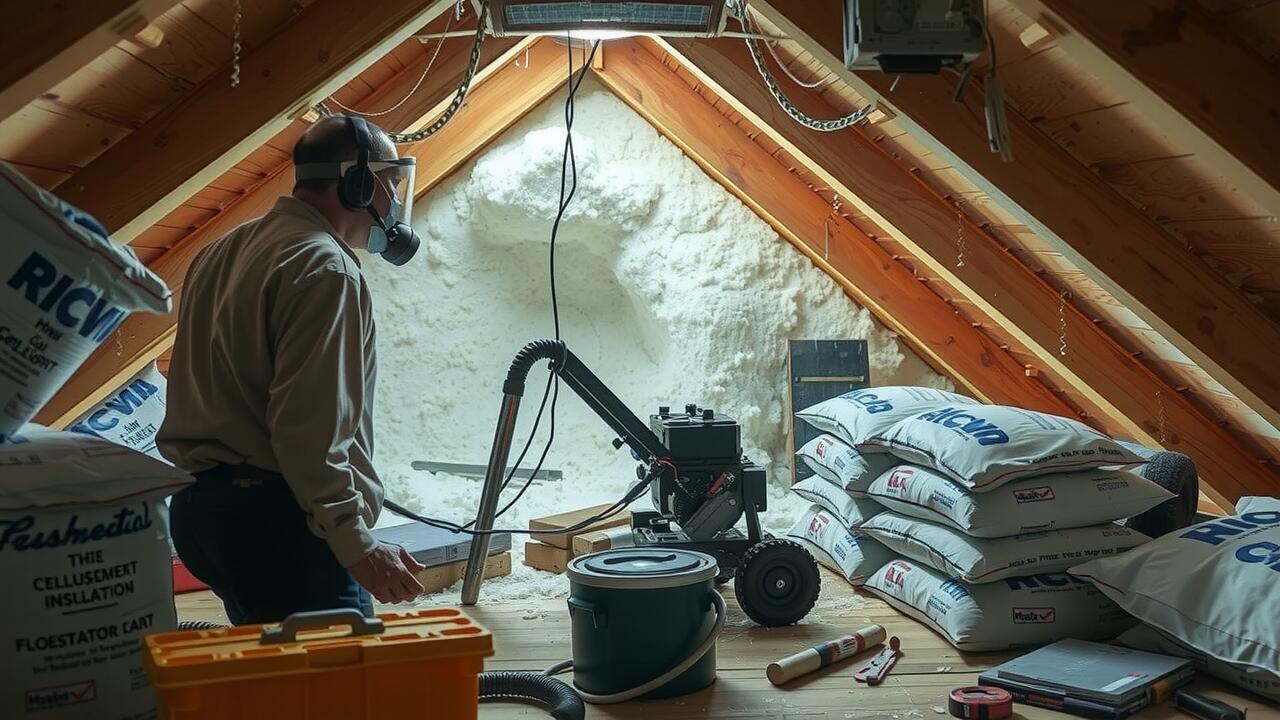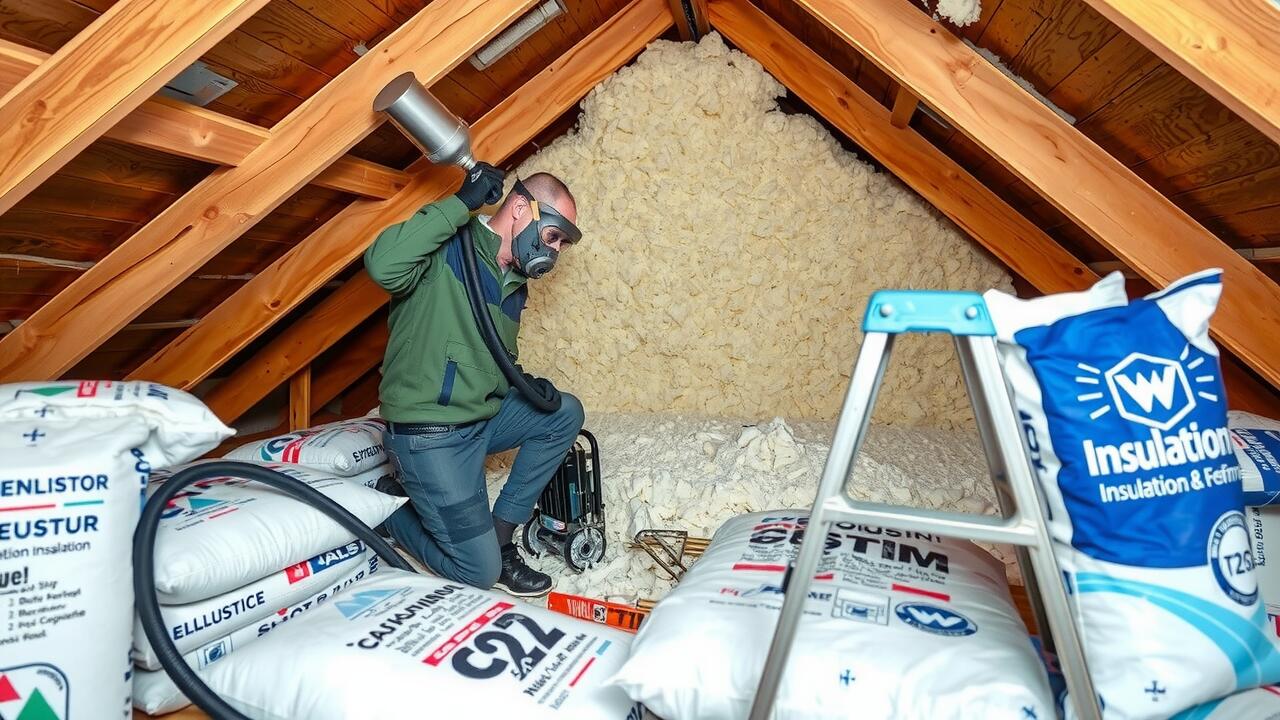
At INSUL8, we specialise in providing top-quality blown-in insulation services designed to enhance your home's energy efficiency and comfort. Using premium materials, our expert team applies a lightweight, fibrous insulation that seamlessly fills cavities and hard-to-reach areas in your walls, lofts, and other spaces. This method not only reduces heat loss during the colder months but also helps regulate indoor temperatures year-round, resulting in lower energy bills and a more environmentally friendly home. With our commitment to excellence and customer satisfaction, INSUL8 ensures that your property remains cosy and well-insulated, giving you peace of mind and a warmer living space.
Soundproofing Advantages
The incorporation of blown-in insulation, such as cellulose or mineral wool, offers noteworthy soundproofing advantages for residential spaces. Cellulose insulation, made from recycled materials, is particularly effective in dampening noise between rooms and outside sources. This attribute is essential for homeowners seeking to create a peaceful environment, especially in urban areas where noise pollution can be disruptive. Proper insulation in lofts, attics, and cavity walls reduces sound transmission, providing a sanctuary for relaxation and privacy.
Different insulation materials, including fibreglass and spray foam, contribute effectively to this soundproofing goal, each having unique properties. For example, fibreglass batts can significantly diminish airborne sound while maintaining energy efficiency. The installation of these materials within timber frames and joists enhances their acoustic performance, creating a well-insulated home that minimises heat loss and promotes thermal comfort. By considering soundproofing as part of a comprehensive insulation strategy, homeowners not only improve their living conditions but also contribute to a more environmentally friendly household.
Reducing Noise Pollution in Homes
Fibreglass insulation offers significant soundproofing benefits, making it an excellent choice for minimising noise pollution in residential spaces. When installed in ceilings and walls, this dense material acts as a thermal barrier while effectively absorbing sound waves. The result is a more peaceful living environment, reducing the intrusion of external noise from neighbours or street traffic. This involves a multidisciplinary approach, ensuring the insulation is applied in a manner that optimally addresses the unique acoustical needs of each space.
Using a combination of materials, including recycled paper and boric acid for added fire retardant properties, enhances the insulation's efficacy. Homeowners can consider options like sheep's wool, which not only provides excellent sound dampening but also aligns with eco-friendly initiatives. Effective noise reduction contributes to better sleep quality and overall well-being, making it a worthwhile investment in home improvement. The insulation's ability to manage air temperature also plays a vital role in the comfort levels of a home, leading to reduced stress on heating and cooling systems, which can ultimately save money on energy bills.
Blown-In Insulation for Different Home Types
Blown-in insulation offers versatile solutions suitable for various home types, from semi-detached houses to sprawling bungalows. This method effectively fills awkward cavities, ensuring comprehensive coverage that traditional batts might miss. Homeowners can benefit from a seamless application process that minimises disruption during renovations. The insulation also enhances thermal resistance in spaces with unique layouts, providing superior temperature regulation throughout the year.
Different materials can be utilised to meet the specific needs of each property. For instance, eco-friendly options such as wool insulation can be ideal for those seeking sustainable solutions. The adaptability of blown-in insulation allows for retrofitting in older homes, ensuring that modern energy efficiency standards are met. Home inspectors often highlight this method for its effectiveness in reducing heat loss through walls and attics, ultimately assisting homeowners in mitigating greenhouse gas emissions.
Tailoring Solutions for Every Space
No two homes are alike, and that principle extends to their insulation needs. Understanding the unique architecture and usage patterns of various home types helps insulation contractors provide tailored solutions that enhance energy efficiency and comfort. For instance, residences with high ceilings or open floor plans may require different techniques or materials than more compact spaces. When considering options such as blown-in insulation, homeowners can choose between various insulation materials like fibreglass or mineral fibres, based on their specific R-values and performance requirements.
Incorporating blown-in insulation can also facilitate retrofitting existing homes, particularly when addressing common problem areas like ceiling insulation or around ductwork. This approach allows for a seamless fit within the structural framing while optimising thermal performance. Effective tailoring not only improves heating and cooling efficiency but also aligns with building regulations and standards, ensuring that each solution adheres to safety and sustainability benchmarks. Implementing these custom solutions can significantly enhance a home's insulation value and contribute to reducing CO2 emissions, an essential step in combatting climate change.
Sustainability and Eco-Friendly Options
Blown-in insulation offers an eco-friendly solution by utilising recycled materials such as cellulose, which is often made from waste paper or cotton. This not only reduces reliance on fossil fuels but also helps streamline the recycling process, ensuring that fewer trees are cut down for new products. Additionally, materials like recycled polystyrene and rock wool contribute to effective thermal resistance while promoting sustainability. By choosing these types of insulation, homeowners can enhance their indoor environment while participating in a responsible consumption cycle.
Incorporating eco-friendly insulation options can yield tax credits and incentives for homeowners. Recycled materials tend to be less hazardous than traditional insulation, promoting safer living conditions and improved indoor air quality. With proper installation and routine maintenance, blown-in insulation can prevent issues like mildew and fire damage, maintaining its effectiveness over time. These materials not only provide excellent sound dampening properties but also contribute significantly to temperature regulation, ensuring that homes remain comfortable year-round.
Using Recycled Materials for Insulation
Recycled materials have gained popularity as sustainable options for improving insulation in homes. Products like cellulose insulation, made from recycled paper products such as newsprint and cardboard, offer an environmentally friendly solution. These materials are often treated with borax to enhance fire resistance and pest management, making them a practical choice for various applications, including cavity walls and attics. Wool insulation, derived from sheep’s fleece, also provides excellent thermal performance, low environmental impact, and natural moisture regulation.
The use of recycled glass in insulation products helps divert waste from landfills while maintaining effective thermal conductivity. This approach aligns with BREEAM certification standards, promoting greener building practices. Combining different materials, such as cork and fiberglass, can maximise insulation performance while ensuring effective airflow and ventilation throughout residential spaces. Incorporating these recycled options can help homeowners reduce energy costs and contribute to lower greenhouse gas emissions.
FAQS
What is blown-in insulation?
Blown-in insulation is a type of thermal insulation that is installed by blowing loose-fill materials, such as cellulose or fibreglass, into wall cavities, attics, and other areas of a home to improve energy efficiency and comfort.
How does blown-in insulation help with soundproofing?
Blown-in insulation can significantly reduce noise pollution in homes by creating sound barriers within walls and ceilings, thereby absorbing sound waves and preventing them from travelling between rooms.
Can blown-in insulation be used in all types of homes?
Yes, blown-in insulation can be tailored to suit various home types, including older homes with irregular spaces and newer constructions. It is versatile and can be applied in attics, walls, and crawl spaces.
Are there eco-friendly options for blown-in insulation?
Yes, there are eco-friendly blown-in insulation options available, such as cellulose made from recycled paper products, which not only provide effective insulation but also contribute to sustainability efforts.
How do I know if blown-in insulation is right for my home?
To determine if blown-in insulation is suitable for your home, consider factors such as your current insulation levels, energy bills, noise concerns, and whether your home has areas that are difficult to insulate using traditional methods. Consulting a professional can provide tailored advice.
